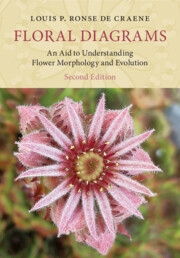Book contents
- Floral Diagrams
- Floral Diagrams
- Copyright page
- Dedication
- Contents
- Preface
- Acknowledgements
- Part I Introduction to Floral Diagrams
- Part II Floral Diagrams in the Major Clades of Flowering Plants
- 4 Systematic Significance of Floral Diagrams
- 5 Basal Angiosperms
- 6 Monocots
- 7 Early Diverging Eudicots
- 8 Basal Pentapetalae
- 9 Rosids
- 10 Caryophyllids
- 11 Asterids
- Part III Conclusions
- Glossary
- References
- Index
9 - Rosids
The Diplostemonous Alliance
from Part II - Floral Diagrams in the Major Clades of Flowering Plants
Published online by Cambridge University Press: 11 March 2022
- Floral Diagrams
- Floral Diagrams
- Copyright page
- Dedication
- Contents
- Preface
- Acknowledgements
- Part I Introduction to Floral Diagrams
- Part II Floral Diagrams in the Major Clades of Flowering Plants
- 4 Systematic Significance of Floral Diagrams
- 5 Basal Angiosperms
- 6 Monocots
- 7 Early Diverging Eudicots
- 8 Basal Pentapetalae
- 9 Rosids
- 10 Caryophyllids
- 11 Asterids
- Part III Conclusions
- Glossary
- References
- Index
Summary
Floral diagrams are presented for sixty families out of fifteenorders of Supperrosidae, including the large and diverse Malvaceae and Leguminosae. The rosids evolved as a major pentamerous clade with five whorls of organs including two whorls of stamens (diplostemony). The clade shows a great amount of diversification, as an increase in complexity with a stamen increase, or a simplification linked with wind pollination through loss of petals. Flowers are generally much diverse with different elaborations of hypanthia. Besides the lower orders, two major clades malvids and fabids are presented, with a large number of families in each. The diversity of characters for different groups are highlighted and floral diagrams are used to clarify important evolutionary shifts, as in Brassicales and Malvales.
Keywords
- Type
- Chapter
- Information
- Floral DiagramsAn Aid to Understanding Flower Morphology and Evolution, pp. 184 - 300Publisher: Cambridge University PressPrint publication year: 2022

